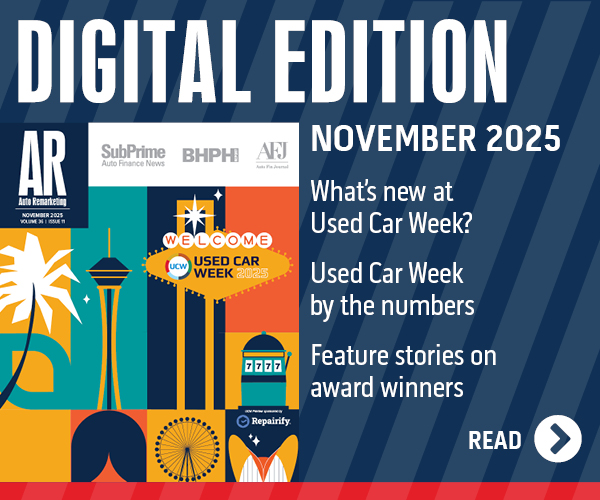COMMENTARY: How variable management helps cure a used-vehicle hangover

By subscribing, you agree to receive communications from Auto Remarketing and our partners in accordance with our Privacy Policy. We may share your information with select partners and sponsors who may contact you about their products and services. You may unsubscribe at any time.
As I examined dealer inventories in the final weeks of 2022, it’s become clear that many dealers have a hangover problem.
The hangover is like many of us have experienced. It’s when we overindulge (and potentially get over-served) with family and/or friends. Then, the next morning arrives, and you pay for the good times you enjoyed.
For dealers, the good times were really great times, and they lasted a long while. Through much of 2020 and 2021, and the early part of 2022, dealers ran high and hot. Few dealers will ever forget the record-setting sales and profits they enjoyed in 2020 and 2021, thanks to unprecedented week-over-week vehicle value appreciation, strong demand and limited supplies. If you had a car, you could almost ask any price and the vehicle would sell fast.
The party started to fade as spring turned to summer in 2022. That’s when used-vehicle depreciation returned, and retail demand lost its tailwinds. Interest rates went up. Consumers worried more about vehicle affordability and inflation. Dealers were still selling decent volumes of used vehicles, and grosses were good, but neither was as strong as they had been.
As the fall of 2022 arrived, the hangover started. Many dealers had more cars in inventory that weren’t selling. Some dealers saw the hangover coming and took the medicine. They began lowering their asking prices and retailing out of their most-distressed inventory.
But I’d submit that the broader majority of dealers aren’t aware that the hangover has arrived. I know this from observing two characteristics of current used vehicle inventories that are strikingly consistent.
Subscribe to Auto Remarketing to stay informed and stay ahead.
By subscribing, you agree to receive communications from Auto Remarketing and our partners in accordance with our Privacy Policy. We may share your information with select partners and sponsors who may contact you about their products and services. You may unsubscribe at any time.
Too much distressed inventory
The first characteristic is an ever-higher share of investment-distressed inventory. I can identify these vehicles by viewing them through a data science lens that focuses on each vehicle’s investment value or profit potential. This view reveals a large subset of vehicles with high cost to market, high market days supply and low retail sales volume — traits that indicate trouble. And while many of the distressed units have reached 45, 60 or 90 days in inventory, some are fresh cars with little to no investment value.
But here’s the real problem: In most, if not all cases, dealers are pricing the distressed vehicles above where the data science recommends in the current market —at or above 100% price to market.
Pricing profitable inventory too low
The second characteristic relates to vehicles that data science identifies as high-value investments. These vehicles are blessed with low market days supply, low cost to market and high retail sales volume — positive traits likely to produce the best profit and ROI outcomes. Yet, I see dealers consistently pricing the high-value vehicles below where data science recommends. And I can also see that these vehicles are selling fast — almost super-fast — compared to the more investment-troubled inventory.
When I see such characteristics, I immediately know what’s happening. Dealers are cheap-selling their best cars, and leaving money on the table, because they aren’t willing to take losses or reckon with their worst cars.
Given the frequency of this condition, I’ve been working to help dealers understand the benefits of a new method to manage their used vehicles, called variable management. This approach is different than the more traditional turn-every-car-fast method of inventory management that has served the industry for the past nearly 20 years.
At the simplest level, variable management uses data science to know each vehicle’s individual investment value and retail potential, and then encourages appropriate action, on a car-by-car basis, to achieve optimal outcomes. On a day-to-day basis, variable management recommends pricing urgency on vehicles that offer the greatest risk and least potential for profit, and patience on vehicles that offer the least risk and highest potential for ROI.
Through my work with dealers who have adopted variable management principles, and those who haven’t, it’s become clear to me that variable management offers a better way forward for dealers to operate their used vehicle departments. When you know each vehicle’s inherent ROI potential, you make better decisions.
In fact, some variable management dealers managed to avoid a hangover altogether, or at least the worst effects. How? Through the data science, they saw the early signs of a party winding down. They acted and took care of their distressed cars.
Today, the variable management dealers are ready for whatever’s next. Meanwhile, the hangover is hurting just about everyone else whether they know it or not.
Dale Pollak is the founder of vAuto and executive vice president at Cox Automotive.


